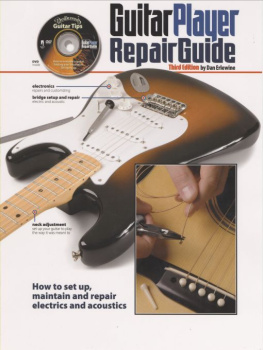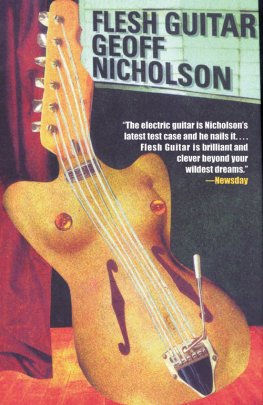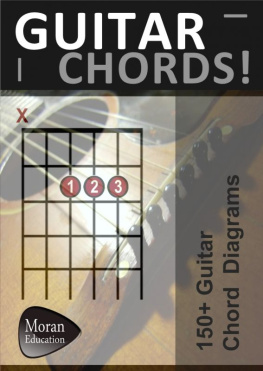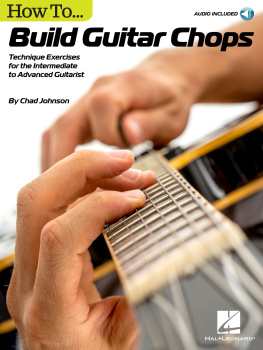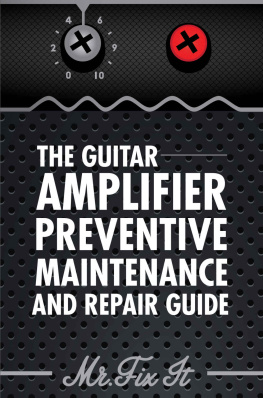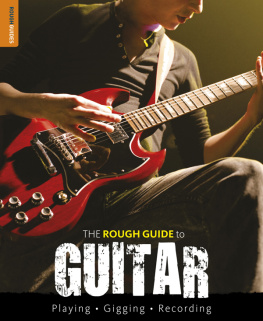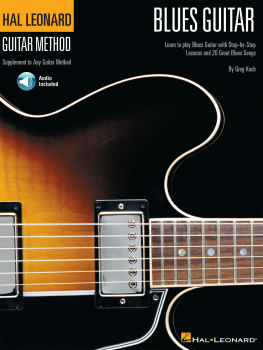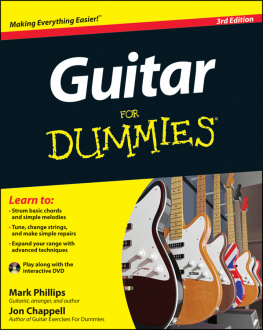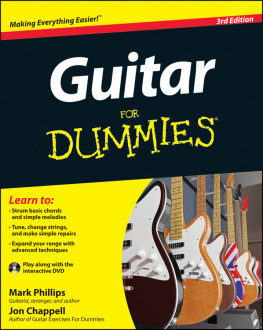Table of Contents
Copyright 2007 by Dan Erlewine
All rights reserved. No part of this book may be reproduced in any form, without written permission, except by a newspaper or magazine reviewer who wishes to quote brief passages in connection with a review.
Published in 2007 by Backbeat Books
An Imprint of Hal Leonard Corporation
19 West 21 st Street, New York, NY 10010
Designed and edited by Tom Erlewine
Cover photos by Suzanne Burkey
We would like to thank Brian Blauser of Athens, Ohio, for his photos from road trips with Dan to check out the guitars of the stars.
Thanks to AI Blixt of Ann Arbor, Michigan, for his photos of BuddyGuy. Thanks also to ErickColeman for his research on guitar electronics.
Printed in the United States of America
Library of Congress Cataloging-in-Publication Data is available upon request.
ISBN 10:0-87930-921-0
ISBN 13:978-0-87930-921-3
www.backbeatbooks.com
To my wife, Joan, and daughters, Meredith and Kate.
They didnt see a lot of me this summer.
And on behalf of my brother Tom, my partner in
creating this book, its dedicated to Sue.
Foreword
In my boundless optimism, I expected clues to sonic miracles. I was talking to Bob Ezrin, who produced Alice Cooper, Lou Reed, Pink Floyd, Kiss, Peter Gabriel and many others, and, in the process, conjured some of the hippest guitar sounds ever blasted across the airwaves. Surely, there must have been some voodoo in his microphone selection, his mic placement and his choice and manipulation of preamps, compressors and other arcane signal processors. But Ezrin made it clearthat everything started with the guitar itself.
An excellent setup is at the center of every good, complex guitar recording, he said. The pickups must be in good shape, the electronics must be as clean as possible, and the fretboard must be buzz-free.
At a time when the quality of inexpensive, off-the-rack guitars can be downright awesome, we tend to forget how a beautifully set up instrumentmore specifically, one tailored to a players every ergonomic desire and technical idiosyncrasycan enhance a guitarists tone and performance. Perhaps we also forget that some guitars have souls that influence our playing in mysterious ways. (Just ask Clapton about Blackie, or B.B. King about Lucille, or Brian May about his Red Special.) The lesson here is just because you can easily replace an instrument thats broken, cranky or sickly, it doesnt mean that you should. In some cases, a few simple repairs can bring a guitar back to lifeor even make it better than ever. And dont forget the whole concept of hot-rodding. With a little guidance and tech savvy, you can swap pickups, futz with wiring and enlist some other tricks to make a cheap guitar rage like a cornered panther, orturbocharge a fine guitar until its something truly magical.
As Ezrin revealed, it all comes down to the guitar and what you do with it. And thats where Dan Erlewine becomes your guru, mentor, coach, visionary, taskmaster, guide and, most likely, savior. Dan knows more about guitars and guitarcraft than pretty much anyone left standing on this planet, and decades of his wisdom, tips, and techniques are encapsulated in this must-have bookwhich should now and forever be your guitar-repair bible.
Dan has been a vital and much-respected member of the Guitar Player family for many years, writing the seminal Repairs & Modifications column, as well as the Repairs column and the innovative Mod Squad feature (which profiled Dans youthful shop crew pimping out various guitars) during my tenure as editor. Dan has also produced several how-to DVDs, and is currently developing a series of video repair guides for Guitar Players Web television station, GPTV.
To quote a clich, Dan is the Man. But thats the whole truth. And after this book inspires you to transform your guitars into the easiest-playing, best-sounding machines youve ever plugged into an amp, youll probably build a little shrine to Dan Erlewine in your music room, rehearsal space or home studio. Yeah, youll be that thrilled with your instruments, and the man deserves it. Now, read on and start making your guitars play better and sound great!
Michael Molenda
Editor in Chief
Guitar Player
Introduction
You and I both want our guitars to stay in tune, play easily, sound great, and look good. Maybe that describes your guitar on the day you bought it, but is it still that way today? Things go wrong over time, but those things can be avoided, or can be fixedthats what this book is for. More comprehensive than ever before, the RepairGuide now includes helpful information for all levels of experience:
You dont need to be good with tools to take good care of your guitar. Whenever possible, these chapters start with basic information-essentials for every guitar owner, things every player needs to know.
Do-it-yourself information is the soul of this book. If youre ready to tackle some of your own adjustments and repairs, lets get your guitars playing the way they were meant to.
In several chapters, I just cant resist taking you deeper into it. For example, after adding lots of new electronics help for do-it-yourselfers, we continue on to show how to make your own pickups!
Ready? Lets get started!
Dan Erlewine
Chapter 1
Cleaning and care

d.i.y.

deep
basic
Cleaning and polishing a guitar is the most basic maintenance task of all, and every player should know how to go about it. Maintaining a new instruments clean good looks is simple if you keep it up from the beginning. But its the lucky player who discovers a vintage piece who needs this chapter most: often that perfect guitar has a finish thats been dulled by years of sweat, dirt, and exposure to barroom smoke and the elements.
Guitar finishes become dirty and hazy because dirt particles come to rest on the finish, which always has a thin film of oil on it no matter how often you clean it. Some of these oils come from your body, while others become suspended in the air from cooking, manufacturing, pollution, etc. The oil and dirt create a build on the finish, which hardens in time and is quite tough to remove. That dirt itself has abrasive qualities, so when you remove it, you could be removing the finish too! Thats why using the right cleaning technique is important.
The supplies needed for cleaning and polishing new or used guitars are few, inexpensive, and easy to use:
Clean, soft rags With several rags and plenty of time, you can clean the dirtiest guitar without polishes or cleaners, although polishes and cleaners help you do a faster, better job. The three best cleaning rags are: used, well-cleaned baby diapers, cotton T-shirts, and 100% cotton flannel. The soft rags that many manufacturers imprint with their company logo and include with a new instrument are made from flannel. You can also buy a yard of flannel at any fabric store for very little cost. Most other rags and fabrics are too coarse for delicate guitar finishes.






 d.i.y.
d.i.y. deep
deep
